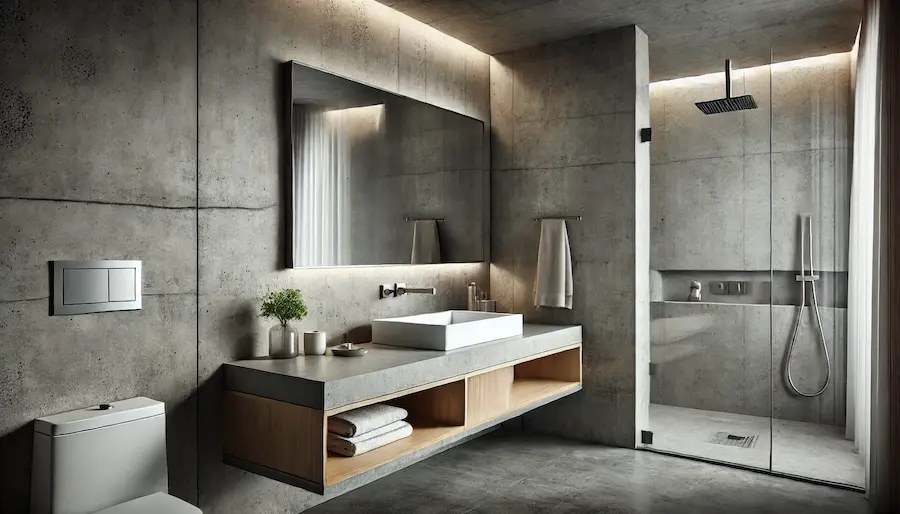Incorporating cement finishes into bathroom design has become increasingly popular, offering a sleek, modern aesthetic that combines durability with minimalist appeal. This article delves into the concept of cement-finished bathrooms, exploring their history, key features, applications, considerations, and concluding thoughts.
Introduction to Cement-Finished Bathrooms
Cement-finished bathrooms utilize materials like concrete and microcement to create smooth, seamless surfaces on walls, floors, and fixtures. This design approach imparts an industrial yet sophisticated look, characterized by clean lines and a monochromatic palette. The versatility of cement finishes allows for integration into various design styles, from ultra-modern to rustic.
History and Origins of Cement-Finished Bathrooms
The use of cement in interior spaces traces back to early 20th-century modernist architecture, where materials like concrete were celebrated for their structural and aesthetic qualities. In bathroom design, the trend gained momentum with the rise of industrial and minimalist styles, emphasizing functionality and simplicity. Advancements in materials, such as microcement—a thin, durable coating—have further popularized cement finishes in contemporary bathroom designs.
Key Features of Cement-Finished Bathrooms
- Seamless Surfaces: Cement finishes create continuous surfaces without grout lines, contributing to a sleek and uncluttered appearance.
- Durability: Cement is highly durable and resistant to moisture when properly sealed, making it suitable for wet environments like bathrooms.
- Versatility: Cement finishes can be applied to walls, floors, countertops, and even sinks, allowing for cohesive design throughout the bathroom.
- Aesthetic Appeal: The neutral gray tones of cement provide a minimalist backdrop that can be accented with various materials and colors to achieve the desired style.
Applications of Cement-Finished Bathrooms
- Walls and Floors: Applying microcement to walls and floors creates a unified look, enhancing the sense of space and continuity.
- Showers: Cement finishes in shower areas offer a waterproof and seamless alternative to traditional tiles, reducing maintenance and grout issues.
- Countertops and Sinks: Custom cement countertops and sinks add a unique, handcrafted element to the bathroom, elevating its design.
- Accent Features: Incorporating cement finishes on specific elements, such as a feature wall or bathtub surround, can add texture and interest without overwhelming the space.
Considerations When Choosing Cement Finishes
- Installation: Applying cement finishes requires skill to achieve a smooth, even surface. Professional installation is recommended to ensure quality results.
- Sealing and Maintenance: Proper sealing is essential to protect cement surfaces from stains and moisture. Regular maintenance, including resealing, may be necessary to preserve the finish.
- Comfort: Cement surfaces can be cold and hard underfoot. Incorporating underfloor heating or using rugs can enhance comfort.
- Design Balance: While cement offers a minimalist aesthetic, balancing it with warmer materials like wood or textiles can prevent the space from feeling too austere.
Conclusion
Cement-finished bathrooms embody a blend of durability, functionality, and modern aesthetics. Their seamless appearance and versatility make them a compelling choice for contemporary bathroom designs. By considering factors such as installation, maintenance, and design balance, homeowners can create a cement-finished bathroom that is both stylish and practical.
